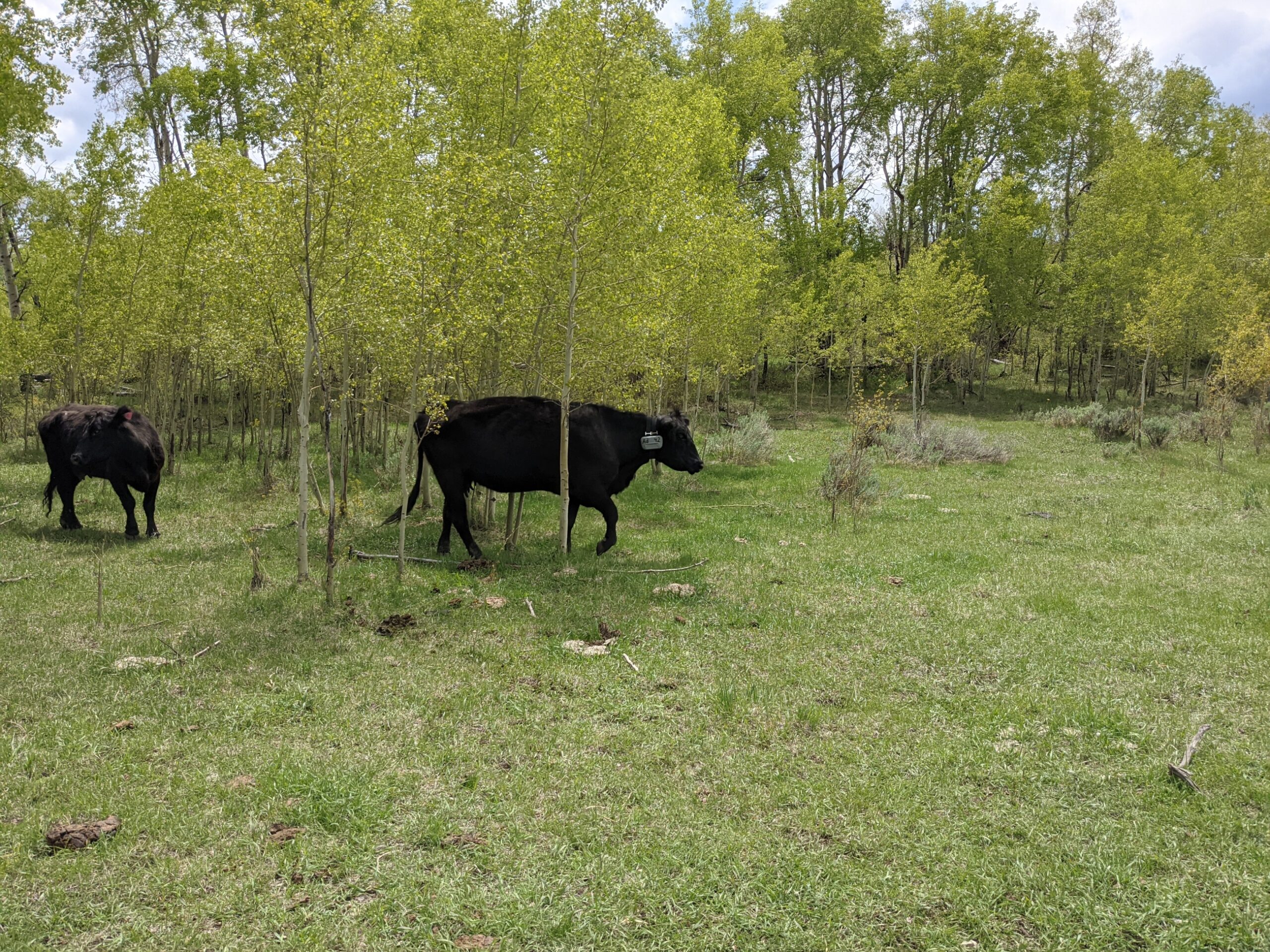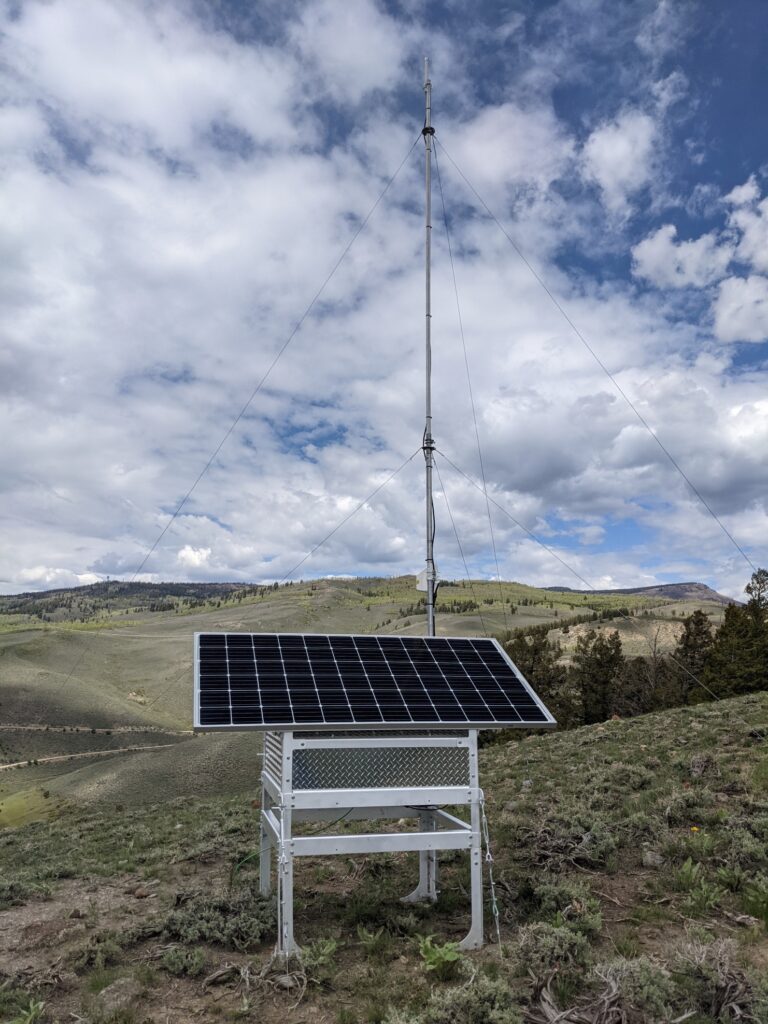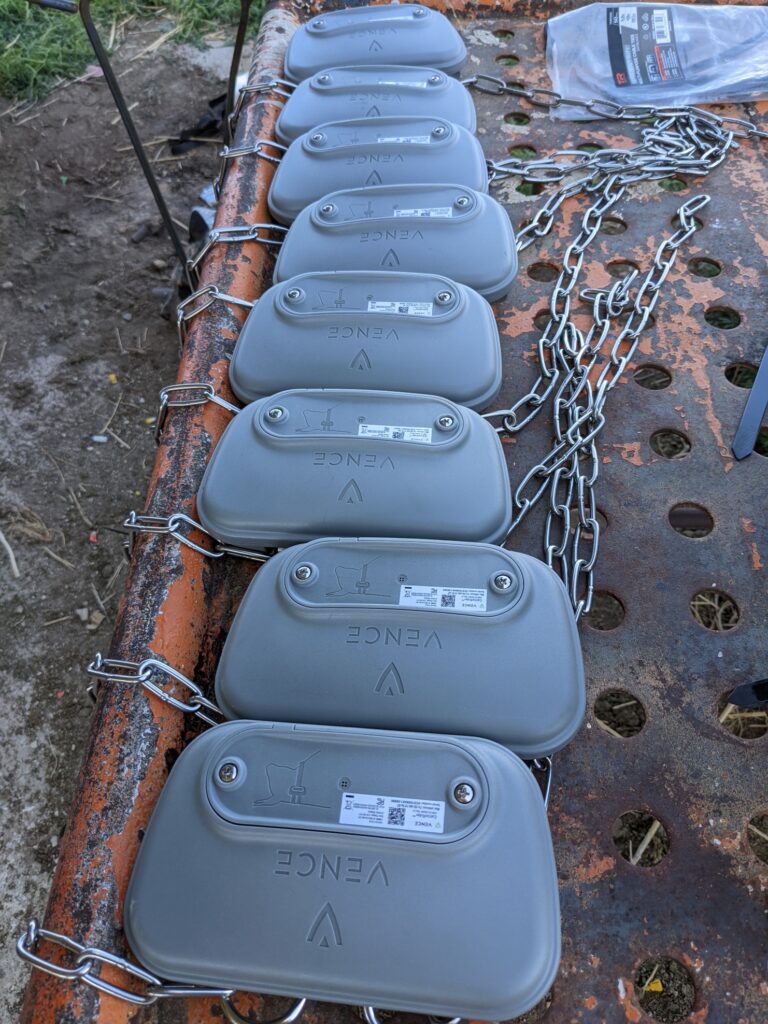Breaking the Code on the Invisible Fenceline

“Someday soon, a workable livestock grazing collar – such as what is described in the article below – will transform restorative grazing practices.
NOTE: this article was originally published to Onland.WesternLandowners.org on April 18, 2023. It was written by Matthew Collins.
Virtual fencing is increasing in popularity around the West by offering a less labor-intensive alternative to age-old barbed wire. We spoke with Tony Vorster, a research scientist at Colorado State University. Vorster has been working with producers around the West to study virtual fencing in the field: how it works and what livestock producers need to know to determine if it is right for them.
HOW IT WORKS
First off, Vorster warned, there is currently only one company commercially offering a virtual fence solution that works at the scale of Western ranches: the company Vence (now a division of Merck Animal Health). Competition is coming soon, however, with European and American competitors in various stages of field testing. Vence’s technology, which Vorster is most familiar with, consists of two primary components: collars and transmission hubs. The collars receive, download and store computer or smartphone application-drawn custom perimeters transmitted from the hub and regularly share location data with satellites. Transmission hubs are about 15 feet tall and must be within cell service to function. They can cover about a six-mile radius, depending on the terrain. Virtual fencing relies on conditioning livestock to respond to an unpleasant stimulus from a collar. When livestock fitted with collars get close to a perimeter set by the rancher in the app, they first hear an alarm sound. If the livestock continue to move closer to the virtu-al barrier they get an electrical shock. To condition the herd, there is a short training period of three days to a week when the virtual boundary is over-lapped with a physical fence. The battery life of the collars can vary from three months to over a year, depending on the frequency of interactions between livestock and boundaries. In other words, if you’re running very tight paddocks, your batteries won’t last as long. “The closer they are to and the more they interact with the perimeter, the quicker the batteries drain,” explained Vorster.

Cattle wearing Vence collars move through pasture on on a ranch in Colorado. Photo courtesy of Tony Vorster.
IS IT FOR YOU?
Producers are adopting virtual fencing to achieve a variety of management goals. They include moving cattle more frequently on open range without having to erect temporary electric fencing, excluding cattle from sensitive areas at specific times, and adjusting paddock sizing and grazing patterns.
“If you don’t have the infrastructure and subdivided pastures, then this is a way that you can get there.”
Tony Vorster
They also reduce the costs of installation and maintenance of interior fencing. When we asked, Vorster liked the idea of trialing virtual fences as a tool to keep cattle out of predator travel routes at certain times of the year, but hadn’t heard of the application in practice yet. “We’re going to learn all sorts of creative ways that people operate this technology,” he noted.
FUNDING THE FENCE
While virtual fencing costs less than installing and maintaining a traditional fence, start-up costs can still be steep. Many operations require at least two transmission hubs which cost about$12,500 apiece. Vence leases its cattle collars for $35–$55 per head on an annual basis, with the non-rechargeable batteries costing another $10 each. Since technology is improving rapidly, Vorster noted that leasing, at least right now, likely has its advantages.
Producers looking for resources to help implement a switch to virtual fencing should check with their local NRCS and federal grazing management agencies (USFS and BLM) about programs. Sometimes, however, the cost-benefit analysis is a no-brainer. For example, one of the producers Vorster works with implemented virtual fencing instead of physical fence replacement after an extensive wildfire burned fences on both their private and leased public ground. That application saved the ranch “a lot of money” — the difference between staying in business or selling out, Vorster said.


NOTE: Since the original story went to press, NoFence, a European company, has officially begun commercially operating in the U.S. NoFence doesn’t require a base station because it relies on the cellular telephone network to update collars with fence data from the company’s smartphone app. For producers with reliable network coverage across all pastures, NoFence may be a considerably cheaper option than the Vence platform. As Vorster mentioned in our conversation, technology is advancing rapidly in this space, so planning accordingly is prudent.
—
For more posts like this, in your inbox weekly – sign up for the Restoring Diversity Newsletter
